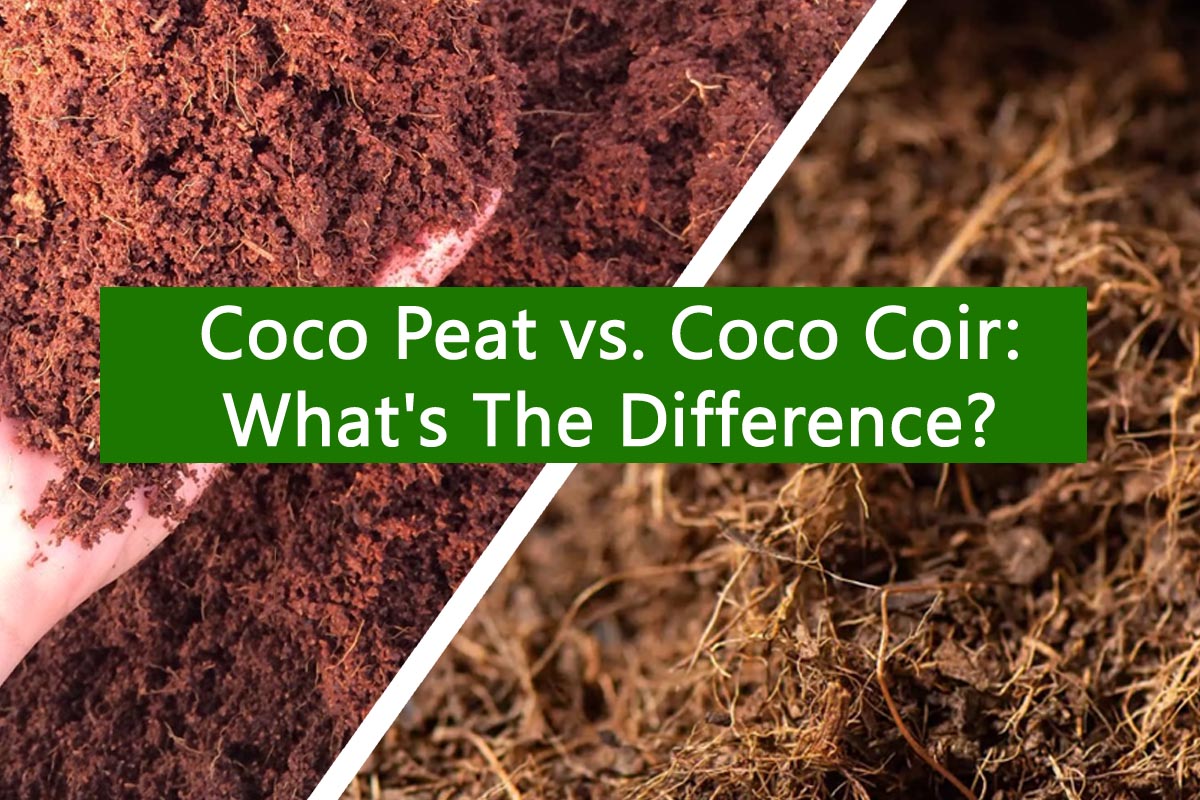
Coco Peat vs. Coco Coir: What’s The Difference?
When it comes to gardening and horticulture, organic and sustainable growing mediums have gained immense popularity. Two materials, often confused but with distinct characteristics, are coco peat and coco coir. If you’re wondering about the differences between these two coconut-derived products and how they can benefit your gardening endeavours, you’ve come to the right place. This blog will explore the distinctions between coco peat and coco coir, shedding light on their properties, uses, and advantages.
What Is Coco Coir?
Coco coir, a natural and sustainable growing medium, is derived from the coarse fibres of coconut husks. It’s widely used in gardening and horticulture as a soil amendment to improve aeration and drainage in potting mixes. Its eco-friendly nature and ability to reduce the environmental impact make it a popular choice for gardeners.
Also Read This : The Life Cycle of Monarch Butterflies and Milkweed Plants
What Is Coco Peat?
Coco peat, also known as coir pith or coir dust, is a natural and sustainable growing medium derived from the husk of coconuts. It has a delicate, soil-like texture and excellent water-retention properties. Coco peat is commonly used in gardening and horticulture as a soil conditioner, soilless growing medium, or as an additive to enhance soil structure and moisture retention.
Also Read This : How to Cultivate Datura at Home: A Gardener’s Guide
Coco Peat: The Fine, Moisture-Retentive Growing Medium
Coco peat, also known as coir pith or coir dust, is a fine, soil-like substance extracted from the husk of coconuts. It is a byproduct of coconut fibre extraction. Here are its primary characteristics:
Texture
Coco peat has a delicate, granular texture, similar to traditional potting soil. It has excellent water retention properties, holding water while providing good aeration to plant roots.
Also Read This : Succulent Soil: Is Coco Peat the Perfect Choice?
Use
Coco peat is primarily used as a soil conditioner, a soilless growing medium, or an additive to improve soil structure and water retention. It is ideal for many plants, including those that prefer consistent moisture.
Advantages
- Excellent moisture retention: Ideal for plants that require consistent moisture.
- Neutral pH: Typically, coco peat has a neutral pH, making it suitable for various plants.
- Sustainability: Using a natural resource efficiently, Coco peat is an eco-friendly choice.
Also Read This : Succulent Wedding Favors: Perfect Green Gifts for Your Guests
Coco Coir: The Coarse, Well-Draining Soil Amendment
Coco coir is derived from the longer, coarse fibres of coconut husks harvested from mature coconuts. Here’s what distinguishes coco coir:
Texture
Coco coir has a coarse, fibrous texture, resembling shredded coconut husk. It is less compact than coco peat and offers excellent drainage properties.
Also Read This : Cleanse Your Indoor Air with These Top Air-Purifying Plants
Use
Coco coir is primarily used as a soil amendment to improve aeration and drainage in potting mixes. It is an excellent choice for plants that require well-draining conditions.
Advantages
- Good drainage: Ideal for plants prone to overwatering and root rot.
- Renewable and sustainable: Harvesting coconut husks is a renewable process, making coco coir an eco-friendly option.
- Reduces environmental impact: Using coco coir helps decrease the demand for peat moss, often harvested unsustainably.
Also Read This : Growing Generations: A Guide to Swiss Cheese Plant Propagation
Key Differences
Texture
The texture is the most apparent difference. Coco peat has a delicate, soil-like texture, whereas coco coir is coarse and fibrous.
Water Retention
Coco peat retains moisture effectively, making it suitable for moisture-loving plants. In contrast, coco coir provides excellent drainage and is favoured for plants that require good aeration and drier conditions.
Also Read This : Monstera Deliciosa: The Marvelous Swiss Cheese Plant
Use
Coco peat is often used as a growing medium, while coco coir primarily enhances soil structure and drainage in potting mixes.
Plant Preferences
Coco peat is better for plants that like consistent moisture, while coco coir is favoured for plants that prefer drier conditions and need good drainage.
Also Read This : Straw Mulch: Unveiling Its Role and Benefits in Farming and Gardening
Understanding the differences between coco peat and coir is crucial for selecting the suitable growing medium or soil amendment for your gardening needs. Whether growing plants that require regular watering or thrive in well-drained conditions, these coconut-derived materials provide eco-friendly options to enhance your gardening success. So, next time you’re planning your garden, choose wisely between coco peat and coco coir, considering the unique requirements of your beloved plants.




